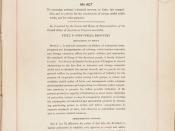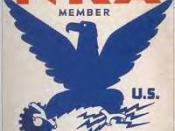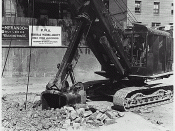The New Deal
During the 1930's, America witnessed a breakdown of the Democratic and
free enterprise system as the US fell into the worst depression in history.
The economic depression that beset the United States and other countries
was unique in its severity and its consequences. At the depth of the depression,
in 1933, one American worker in every four was out of a job. The great industrial
slump continued throughout the 1930's, shaking the foundations of Western
capitalism.
The New Deal describes the program of US president Franklin D. Roosevelt
from 1933 to 1939 of relief, recovery, and reform. These new policies aimed to
solve the economic problems created by the depression of the 1930's. When Roosevelt
was nominated, he said, 'I pledge you, I pledge myself, to a new deal for the
American people.' The New Deal included federal action of unprecedented scope to
stimulate industrial recovery, assist victims of the Depression, guarantee minimum
living standards, and prevent future economic crises.
Many economic, political, and
social factors lead up to the New Deal. Staggering statistics, like a 25% unemployment
rate, and the fact that 20% of NYC school children were under weight and malnourished,
made it clear immediate action was necessary.
In the first two years, the New Deal was concerned mainly with relief,
setting up shelters and soup kitchens to feed the millions of unemployed. However
as time progressed, the focus shifted towards recovery. In order to accomplish this
monumental task, several agencies were created. The National Recovery Administration
(NRA) was the keystone of the early new deal program launched by Roosevelt. It was
created in June 1933 under the terms of the National Industrial Recovery Act. The NRA
permitted businesses to draft 'codes of fair competition,' with presidential approval,
that regulated prices, wages, working conditions, and...


